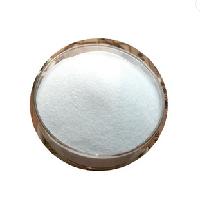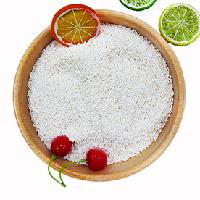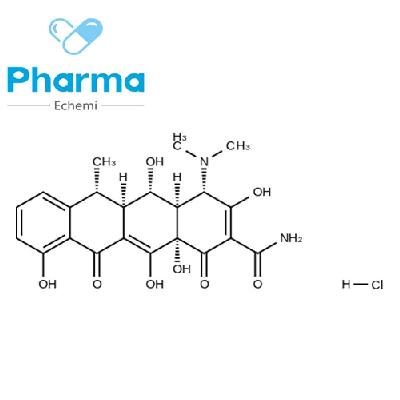-
Categories
-
Pharmaceutical Intermediates
-
Active Pharmaceutical Ingredients
-
Food Additives
- Industrial Coatings
- Agrochemicals
- Dyes and Pigments
- Surfactant
- Flavors and Fragrances
- Chemical Reagents
- Catalyst and Auxiliary
- Natural Products
- Inorganic Chemistry
-
Organic Chemistry
-
Biochemical Engineering
- Analytical Chemistry
-
Cosmetic Ingredient
- Water Treatment Chemical
-
Pharmaceutical Intermediates
Promotion
ECHEMI Mall
Wholesale
Weekly Price
Exhibition
News
-
Trade Service
On September 7, the Propaganda Department of the CPC Central Committee held a series of press conferences on the theme of "China's Decade" to introduce the achievements in the development of health care since the 18th National Congress of the Communist Party of China and answer reporters' questions
.
.
Zhu Hongbiao, head of the Department of Institutional Reform of the National Health commission, said that in recent years, the ability of grass-roots disease prevention and treatment and health management has continued to improve
.
.
First, the grass-roots medical and health network has basically achieved full coverage, and the accessibility of services has been further improved
.
By the end of last year, there were nearly 980,000 primary medical and health institutions nationwide, including 35,000 township health centers, 599,000 village clinics, and 36,000 community health service centers and service stations
.
.
By the end of last year, there were nearly 980,000 primary medical and health institutions nationwide, including 35,000 township health centers, 599,000 village clinics, and 36,000 community health service centers and service stations
.
Second, the service capacity has continued to increase, and the recognition of residents has gradually improved
.
In 2021, 4.
25 billion people will be provided by primary medical and health institutions, accounting for 50.
2%
of the total number of medical and health institutions in the country.
.
In 2021, 4.
25 billion people will be provided by primary medical and health institutions, accounting for 50.
2%
of the total number of medical and health institutions in the country.
Third, the number of grass-roots health personnel has increased significantly, and the structure has been continuously optimized
.
In the past ten years, the total number of personnel in primary medical and health institutions has increased from 3.
437 million to 4.
432 million, the proportion of practicing physicians and practicing assistant physicians in the village medical team has increased from 18.
5% to 41.
5%, family doctor contract services have been steadily promoted, doctor-patient contact and communication have been strengthened, and the role of health education and guidance has been strengthened
.
.
In the past ten years, the total number of personnel in primary medical and health institutions has increased from 3.
437 million to 4.
432 million, the proportion of practicing physicians and practicing assistant physicians in the village medical team has increased from 18.
5% to 41.
5%, family doctor contract services have been steadily promoted, doctor-patient contact and communication have been strengthened, and the role of health education and guidance has been strengthened
.
The fourth is to improve the quality and expansion of basic public health services and promote fair access
.
The per capita basic public health service funding subsidy standard has been raised from 25 yuan in 2012 to the current 84 yuan, and the projects carried out by grass-roots institutions have been expanded from 10 categories to 12 categories, providing more than 1 billion health management services
for patients with key diseases such as hypertension, diabetes, tuberculosis and other key groups such as children aged 0-6 years, pregnant women, and the elderly aged 65 and above every year.
.
The per capita basic public health service funding subsidy standard has been raised from 25 yuan in 2012 to the current 84 yuan, and the projects carried out by grass-roots institutions have been expanded from 10 categories to 12 categories, providing more than 1 billion health management services
for patients with key diseases such as hypertension, diabetes, tuberculosis and other key groups such as children aged 0-6 years, pregnant women, and the elderly aged 65 and above every year.
On September 7, the Propaganda Department of the CPC Central Committee held a series of press conferences on the theme of "China's Decade" to introduce the achievements in the development of health care since the 18th National Congress of the Communist Party of China and answer reporters' questions
.
.
Zhu Hongbiao, head of the Department of Institutional Reform of the National Health commission, said that in recent years, the ability of grass-roots disease prevention and treatment and health management has continued to improve
.
Healthy and healthy.
First, the grass-roots medical and health network has basically achieved full coverage, and the accessibility of services has been further improved
.
By the end of last year, there were nearly 980,000 primary medical and health institutions nationwide, including 35,000 township health centers, 599,000 village clinics, and 36,000 community health service centers and service stations
.
.
By the end of last year, there were nearly 980,000 primary medical and health institutions nationwide, including 35,000 township health centers, 599,000 village clinics, and 36,000 community health service centers and service stations
.
Second, the service capacity has continued to increase, and the recognition of residents has gradually improved
.
In 2021, 4.
25 billion people will be provided by primary medical and health institutions, accounting for 50.
2%
of the total number of medical and health institutions in the country.
Standard standards.
In 2021, 4.
25 billion people will be provided by primary medical and health institutions, accounting for 50.
2%
of the total number of medical and health institutions in the country.
Third, the number of grass-roots health personnel has increased significantly, and the structure has been continuously optimized
.
In the past ten years, the total number of personnel in primary medical and health institutions has increased from 3.
437 million to 4.
432 million, the proportion of practicing physicians and practicing assistant physicians in the village medical team has increased from 18.
5% to 41.
5%, family doctor contract services have been steadily promoted, doctor-patient contact and communication have been strengthened, and the role of health education and guidance has been strengthened
.
.
In the past ten years, the total number of personnel in primary medical and health institutions has increased from 3.
437 million to 4.
432 million, the proportion of practicing physicians and practicing assistant physicians in the village medical team has increased from 18.
5% to 41.
5%, family doctor contract services have been steadily promoted, doctor-patient contact and communication have been strengthened, and the role of health education and guidance has been strengthened
.
The fourth is to improve the quality and expansion of basic public health services and promote fair access
.
The per capita basic public health service funding subsidy standard has been raised from 25 yuan in 2012 to the current 84 yuan, and the projects carried out by grass-roots institutions have been expanded from 10 categories to 12 categories, providing more than 1 billion health management services
for patients with key diseases such as hypertension, diabetes, tuberculosis and other key groups such as children aged 0-6 years, pregnant women, and the elderly aged 65 and above every year.
Hypertension and hypertensive diseases in children and children .
The per capita basic public health service funding subsidy standard has been raised from 25 yuan in 2012 to the current 84 yuan, and the projects carried out by grass-roots institutions have been expanded from 10 categories to 12 categories, providing more than 1 billion health management services
for patients with key diseases such as hypertension, diabetes, tuberculosis and other key groups such as children aged 0-6 years, pregnant women, and the elderly aged 65 and above every year.







